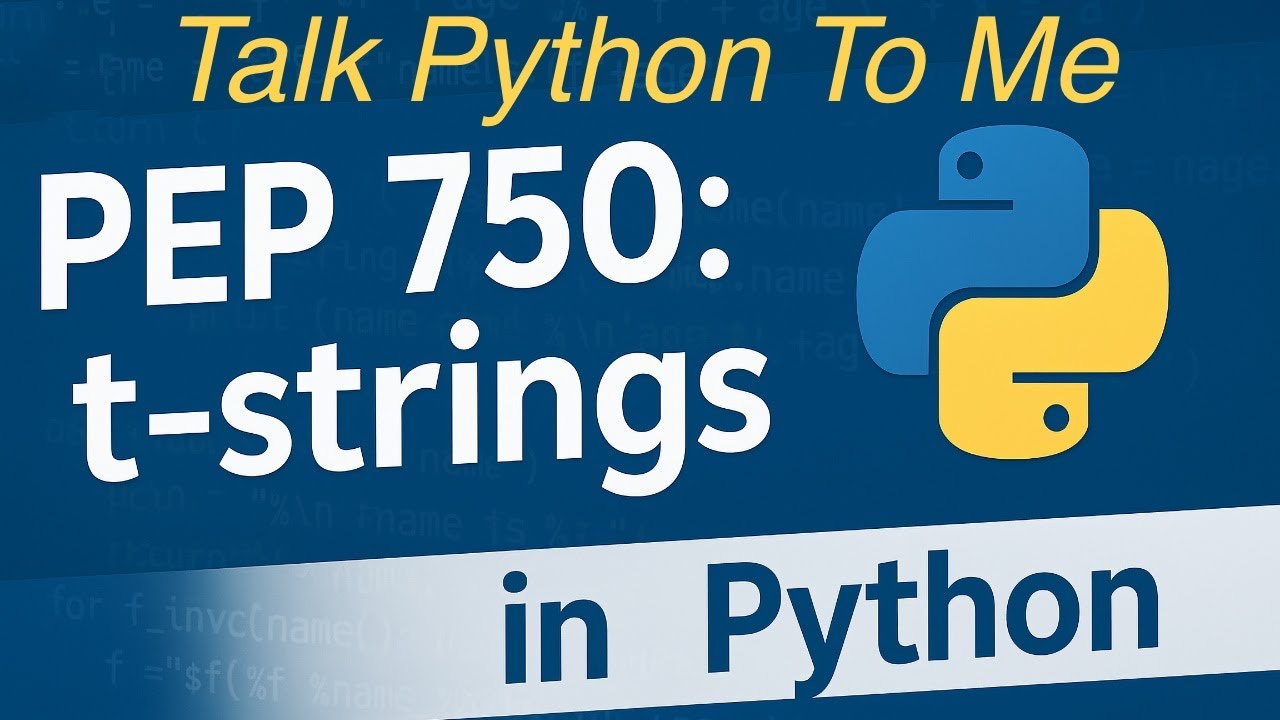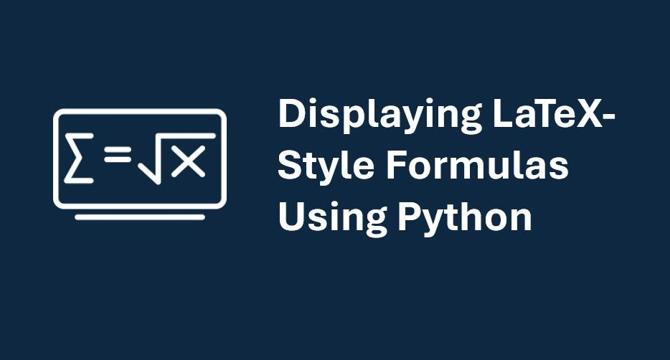Python
Dev
103

Image Credit: Dev
How to generate dynamic invoices for SaaS applications in Python 💸
- Invoice generation in SaaS applications can be simplified using reportgen.io, offering automation, scalability, and security.
- Integrating reportgen.io involves defining dynamic templates with conditional logic, like VAT calculations and subtotals.
- Creating Python functions to dynamically calculate invoice data and generate PDFs synchronously or asynchronously is key.
- Functions include generating invoice data based on line items and VAT percentage, synchronous PDF generation, and asynchronous PDF queuing.
- Usage involves providing dynamic data inputs and calling the Python functions to generate invoices in PDF format.
- reportgen.io stands out for supporting complex document generation, scalability, developer-friendly features, security, and competitive advantages.
- Future steps include integrating with services for automated invoice emailing, payment links attachment, and CRM updates for workflow enhancement.
- Utilize reportgen.io to enhance automation in SaaS applications and explore additional integrations for improved functionality.
- Access the source code on GitHub and try reportgen.io for free with 150 reports monthly without requiring a credit card.
- Share feedback or code improvements in the comments section for further collaboration and refinement of the process.
Read Full Article
6 Likes
Medium
275

Image Credit: Medium
Why Python Even Has Complex Numbers (And What You Can Actually Do With Them)
- Python supports complex numbers out of the box, allowing for easy manipulation of real and imaginary values in a single variable.
- Complex numbers are useful for describing 2D direction, rotation, signal waves, and orbital paths efficiently in Python.
- The .real and .imag attributes in Python provide control to analyze, transform, or visualize each axis of movement, simplifying complex manipulations.
- Python's built-in support for complex numbers simplifies tasks like signal processing, graphics, and simulations, allowing developers to focus on building applications rather than intricate math operations.
Read Full Article
16 Likes
Dev
261

Image Credit: Dev
How to Accurately Extract Data from Subimages in Python?
- Data extraction from images containing multiple subimages can be challenging, especially with tools like Gemini yielding incorrect results.
- To accurately extract data from individual subimages using Python, you can follow these steps:
- Install required libraries like Pillow and pytesseract.
- Load the image, split it into subimages, extract text from each subimage using OCR, and clean up the extracted data for accuracy.
Read Full Article
15 Likes
Dev
67

Image Credit: Dev
How to Set Album Art for MP3 Files using Python?
- Many people want to enhance their MP3 collections by adding visual elements like album art, as it improves the listening experience by providing context to the music.
- Mutagen is a Python module that offers a simple way to handle audio metadata, supporting various formats including MP3, FLAC, and others.
- To set album art for an MP3 file using Mutagen, you need to install it using pip and then follow a step-by-step process, including importing necessary libraries, loading the MP3 file, setting the album art by reading and encoding an image file, and checking if the art was added successfully.
- If Mutagen doesn't meet your needs, alternatives like eyed3 and tinytag can be considered for working with ID3 tags in MP3 files or reading metadata respectively.
Read Full Article
4 Likes
Discover more
Medium
203
Image Credit: Medium
Go Just Outshined Python for This One Reason
- In the world of programming, developers compare languages to find the best tool for their projects.
- Python is known for its simplicity and versatility, while Go (Golang) is gaining traction for performance and concurrency.
- Go outshines Python in concurrency and scalability for high-performance systems due to its design and concurrency model.
- The article emphasizes Go's strengths in concurrency, making it a compelling choice for certain applications, while acknowledging Python's advantages.
Read Full Article
12 Likes
Dev
388

Image Credit: Dev
🧱 I Built My Python Web App Like a City (Not an App)
- The article discusses treating a Flask web app like a city, with modules represented as districts, endpoints as buildings, routes as roads, and middleware as traffic control.
- Different aspects of a city, such as neighborhoods, roads, buildings, utilities, decay, and sprawl, are metaphorically linked to components of the web app.
- The author outlined the approach taken in different phases: City Blueprint (zoning the app into districts), Traffic & Infrastructure (adding middlewares for traffic control), and Sanitation & Decay (cleaning up old or unused components).
- This city-planning approach prompted considerations on scalability, user flow, resource usage, and legacy within the app structure.
- The author suggests expanding the metaphor to include concepts like pollution tracking, public transport, crime prevention, disaster response, and using city-planning tools for app visualization.
- The shift in mindset encourages developers to prioritize logical grouping over individual functions, enhance flow, build sustainable communities of logic, and ensure long-term livability in the codebase.
- By adopting the city-building mindset, developers can improve code organization, prioritize usability, and plan for long-term maintenance and growth.
- The article also offers free GitHub bundles containing various resources for developers to build faster and smarter, with options ranging from open-source projects to developer libraries and system projects.
- The author concludes by encouraging readers to approach app development like city planning, considering aspects like city center, sprawl, traffic congestion, and safety to create more efficient and user-friendly applications.
- Overall, the metaphor of building apps like cities promotes a more holistic and thoughtful approach to software development, emphasizing usability, scalability, and long-term sustainability.
Read Full Article
23 Likes
Dev
424

Image Credit: Dev
🧑🏫 How to Teach GPT to Code Python your way
- The article discusses how AI can be trained to assist developers in coding, likening the AI to an intern with potential but lacking judgment.
- It emphasizes the importance of mentoring and guiding AI like an apprentice to improve its coding skills.
- The concept of 'AI Pair Programming' is introduced as a way to work with AI in a structured manner to solve coding problems.
- Guidelines are provided on setting up an AI coding flow, outlining problems, coding basic versions, and documenting the process.
- The article suggests training AI to learn developer preferences and habits to produce cleaner code with fewer bugs.
- Building feedback loops for auto-evaluation is recommended to help AI improve itself based on set standards and unit tests.
- Resources like Typer Docs, Rich, Python Type Hints, and pytest are suggested to aid in smart prompting and debugging while training AI.
- The article concludes by emphasizing that developers are not being replaced by AI but rather elevated through the mentorship and training of AI tools.
- It encourages developers to start training AI using scripts, guiding them through each project and prompt, with a reminder to come back for support.
- Additionally, ten recommended courses related to computing, tech history, and programming weirdness are highlighted for further learning.
Read Full Article
25 Likes
Dev
388

Image Credit: Dev
⚡ Real-Time Data Dashboards with Python: Build a Lightning-Fast Web App for Live Metrics
- Businesses now require instant visibility into key metrics, achievable through real-time dashboards built with Python and modern web tools.
- The guide demonstrates constructing a real-time web dashboard using FastAPI, WebSocket integration with Starlette, Redis for pub/sub, Chart.js + HTMX for front-end updates, PostgreSQL for historical storage, and Tailwind CSS for UI.
- An example scenario involves monitoring smart sensors in warehouses for temperature/humidity with live charts, historical data, alerts, and responsive design.
- The tech stack includes FastAPI for the backend, Tailwind + HTMX for the frontend, WebSockets + Redis for real-time updates, PostgreSQL for storage, and Redis for caching.
- Project structure includes backend with FastAPI, models, WebSocket, and DB setup, frontend with templates and static files, and a script for simulating sensor data.
- Additional features cover storing data in PostgreSQL, triggering alerts with thresholds, and deployment tips using Uvicorn, Gunicorn, NGINX, and platforms like Render or DigitalOcean.
- The tutorial encompasses Async WebSockets, Redis Pub/Sub, FastAPI Routing + BackgroundTasks, HTMX + Chart.js, PostgreSQL integration, and real-world hardware modeling.
- Real applications for such dashboards include factory sensors, crypto tickers, fleet management, fitness visualizers, and server monitoring tools.
- Python's modern ecosystem enables developers to create and deploy real-time dashboards without the complexities of React or Firebase, offering vast business potential.
- Done-for-you article kits are available for quick content creation, including topics like DIY computing, hacker techniques, bot invasions, data manipulation, and forgotten tech frontiers.
- One can use these articles to boost authority, attract traffic, monetize, and customize with branding, affiliate links, and quick publishing for blogs, newsletters, social posts, and more.
Read Full Article
23 Likes
PlanetPython
280

Image Credit: PlanetPython
Talk Python to Me: #505: t-strings in Python (PEP 750)
- Python has introduced a new string formatting feature called t-strings for advanced use-cases such as SQL, HTML, and DSLs.
- t-strings are seen as the next evolution of Python string formatting after f-strings, aiming to address security concerns and runtime code manifestations.
- PEP 750 introduces Template Strings and is designed to enable writing domain-specific languages.
- Guests on the show include Paul Everitt, David Peck, and Jim Baker discussing the new t-strings feature in Python.
Read Full Article
16 Likes
Dev
58

Image Credit: Dev
The Role of Automation in Email Marketing Using Python
- Email marketing remains a highly effective channel for businesses, but manual efforts are not feasible in today's digital world, leading to the rise of automation.
- Python plays a crucial role in email marketing automation due to its flexibility, control, and integration capabilities with various systems.
- Automation benefits include saving time, increasing engagement, improving accuracy, and enabling scalability for reaching a larger audience.
- Using Python for email automation offers beginner-friendly features, rich libraries for handling emails, scheduling, data processing, and easy integration with external APIs and databases.
Read Full Article
3 Likes
Medium
13

Image Credit: Medium
Displaying LaTeX-Style Formulas Using Python
- Python libraries can be used to format equations like LaTeX for clean math formatting.
- Matplotlib supports LaTeX-style math using a simplified math expression parser.
- SymPy is Python's symbolic mathematics library that allows formatting and pretty-printing formulas using ASCII, Unicode, or LaTeX.
- Manim is a math animation engine for creating professional and presentation-ready math animations.
Read Full Article
Like
Medium
4.1k

*Let's now understand the A–Z of Python programming concept in more detail:*
- Python programming concepts from A to Z:
- - Positional, keyword, default, and variable-length are common argument types.
- - Built-in functions simplify tasks like printing, finding length, etc.
- - Comprehensions provide a concise way to create lists, sets, and dictionaries.
Read Full Article
23 Likes
Arxiv
293

Image Credit: Arxiv
Dialz: A Python Toolkit for Steering Vectors
- Dialz is introduced as a Python toolkit for enhancing research on steering vectors for open-source LLMs.
- It allows users to adjust activations at inference time to magnify or lessen specific concepts, offering a more effective option than prompting or fine-tuning.
- Dialz supports various tasks like generating contrastive pair datasets, computing and applying steering vectors, and visualizations, focusing on modularity and usability.
- The toolkit aids in reducing harmful outputs and understanding model behavior, promoting safe and controllable language generation, faster research progress, and improved AI system transparency.
Read Full Article
17 Likes
Medium
330

Image Credit: Medium
Optimizing Bank Loan Approvals with Genetic Algorithms in Python
- Genetic algorithms are being used to optimize loan approvals in banks by a data scientist.
- Genetic algorithms offer a more efficient solution compared to traditional grid search and brute-force approaches.
- GA is inspired by natural selection and evolves solutions over generations to find optimal outcomes.
- This article explains the intuition behind genetic algorithms and their application in optimizing loan approval thresholds.
Read Full Article
19 Likes
Towards Data Science
213

Running Python Programs in Your Browser
- WebAssembly (WASM) technology enables running Python code directly in the browser, expanding web capabilities beyond HTML, CSS, and JavaScript.
- Pyodide library leverages WebAssembly, benefiting Python developers by allowing execution of Python code in the browser.
- Benefits of using Pyodide include access to popular Python libraries like NumPy, Pandas, Scikit-learn, and Matplotlib for data science and machine learning tasks.
- Pyodide facilitates building interactive dashboards and tools by combining Python's processing power with web technologies like HTML, CSS, and JavaScript.
- WebAssembly offers portability, high performance, security, and allows developers to write code in languages like C, C++, Rust, and Python, providing near-native execution speed.
- Common use cases of WebAssembly include high-performance web apps, porting legacy code, multimedia processing, scientific computing, and running multiple languages like Python in the browser.
- Pyodide's integration with WebAssembly enables running Python in the browser, offering benefits such as extensive library ecosystem usage, enhanced responsiveness, and simplified deployment.
- The Pyodide project involves porting the CPython interpreter to WebAssembly, allowing for a functional Python interpreter optimized for web environments.
- Code examples demonstrate running Python code in the browser using Pyodide, including simple print statements, mathematical calculations, calling Python functions from JavaScript, and utilizing libraries like NumPy and Matplotlib.
- Further examples showcase running Pyodide in a Web Worker for heavy computations, creating data dashboards directly in the browser, and visualizing data using Numpy and Matplotlib.
- The combination of Python, Pyodide, and WebAssembly offers a powerful toolset for developers to run Python programs within browsers, opening up possibilities for interactive web applications.
Read Full Article
12 Likes
For uninterrupted reading, download the app